Blog 3: Tourism in Antarctica
On the 100th anniversary of Shackleton's famous Endurance expedition, British writer Jonathan Thompson and photographer Mark Chilvers head down to Antarctica to discover the Great White Continent for themselves
Next year marks the 50th anniversary of commercial tourism to Antarctica.
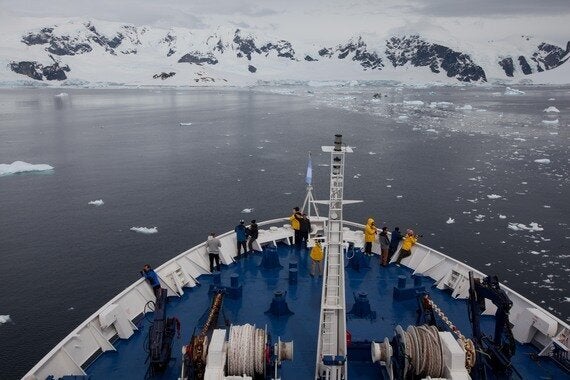
Adventure tourists armed with cameras and wrapped in fleece and Gore-Tex layers photograph the Antarctic coast from the bow of Quark's Ocean Diamond. Photo by Mark Chilvers
That in itself is a ridiculous accomplishment when you consider that exactly 50 years before, Shackleton and the men of the Endurance were on this selfsame ice, engaged in a desperate race against death.
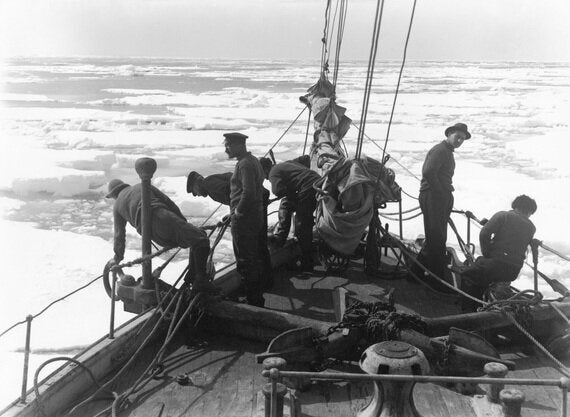
Shackleton and his men crowd onto the bow of their ship The Endurance to observe the sea ice. Photo by Frank Hurley/Royal Geographic Society
With his ship - not to mention his dreams of becoming the first to cross the Seventh Continent - hideously crushed, Shackleton sought to rescue his 27 men by taking them north in an epic journey across the sea ice, up the Antarctic Peninsula.
Today that Peninsula is at the epicentre of Antarctic tourism, with adventure travel companies like Quark Expeditions bringing more than 30,000 tourists here every year between November and March, when the ice melts enough to allow their expedition ships through.
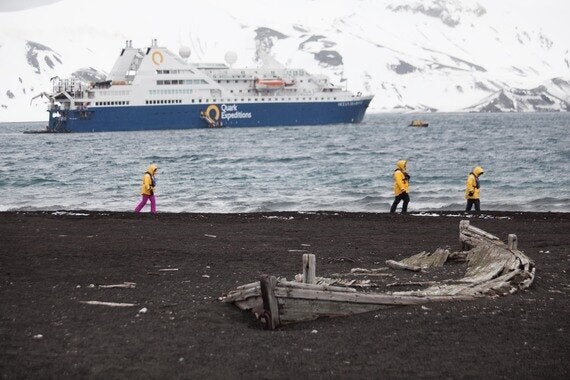
Quark Expedition's Ocean Diamond moored off shore during an excursion where passengers explore Deception Island, an active volcano and former whaling station. Photo by Mark Chilvers
It is on one of Quark's ice-reinforced ships, the Ocean Diamond, that we too are exploring the Peninsula. Our destination today:Port Lockroy. Originally a British research base, it is now home to a working museum, a thriving colony of 2,000 penguins - and the most southerly post office in the world.

The original kitchen at Port Lockroy now preserved as a museum and the world's most southerly post office. Photo by Mark Chilvers
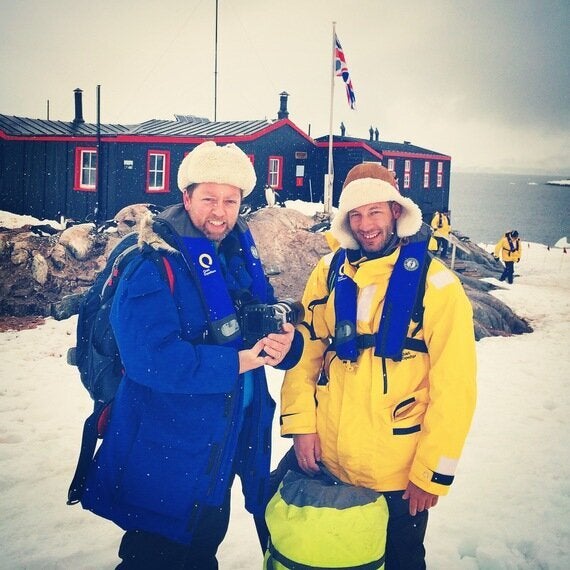
Mark Chilvers and Jonathan Thompson at Port Lockroy. Photo by A.Tourist
Once safely ashore, we explore the fascinating snow-covered huts which make up the base. History is ever-present here, from the fully stocked 1950s kitchen to the natty range of 'Shackleton' knitwear for sale, inspired by the official Jaeger expedition kit worn by the 'Boss' and his crew.
One of the volunteers stationed at Port Lockroy for the entire Austral Summer is 30-year-old Stephen Skinner from County Durham.
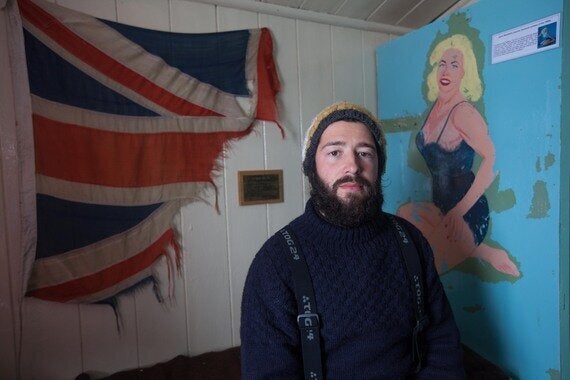
Stephen Skinner in the museum's sleeping quarters, decorated with hand painted pin up girls from the 50's and 60's that were uncovered during recent renovations. Photo by Mark Chilvers
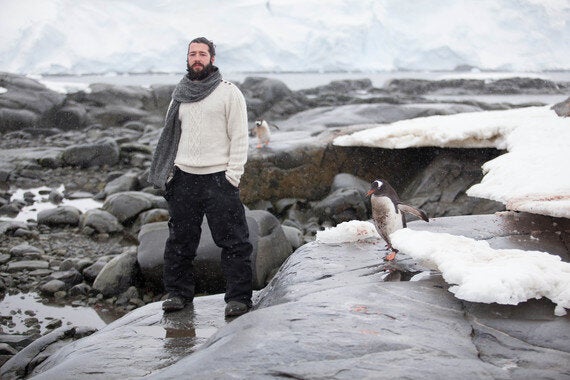
Stephen Skinner stands on the rocky shore of Port Lockroy that he shares with three other staff, several hundred penguins and thousands of visiting tourists each season. Photo by Mark Chilvers
"I've just always wanted to come here," grins Skinner, who recently celebrated his 30th birthday on the ice, 9,000 miles from home. "It's predominantly from reading books about the polar heroes when I was a kid, mainly Shackleton. He was always my favourite."
The penguin colony is very much part of life at Port Lockroy too, and Skinner wouldn't have it any other way. "We monitor the penguins carefully as part of our work down here, from counting the eggs to watching the chicks grow," he explains.
"I can't believe the early explorers would actually eat them, they're such awesome little characters."
Part of the remit for Skinner and his colleagues is also to maintain a number of other historical British huts on the Peninsula. Most are uninhabited - but not all. The UK sold one of the biggest bases, Faraday, to the Ukraine in 1996. Renamed Vernadsky Research Base, it too welcomes visits from Antarctic tourists today. (Tip: they sell 'blow-your-head-off' homemade vodka).
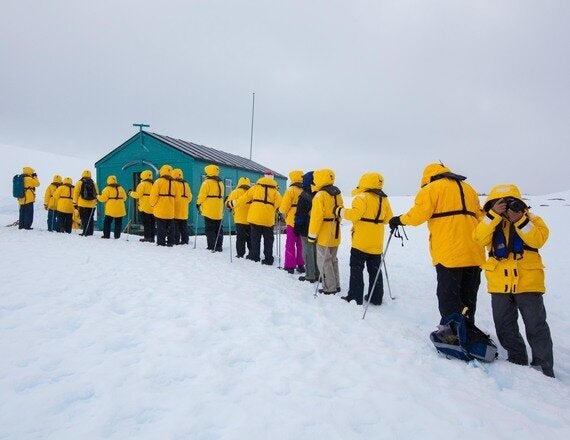
Adventure tourists queue up to visit a transit hut that has been left by the former British owners as a museum destination. Photo by Mark Chilvers
The Ocean Diamond, Port Lockroy and Vernadsky Research Base are all a far cry from the Antarctica of Ernest Shackleton, but in terms of the broader environment, very little has changed. Whiskered Weddell seals laze about on ice floes, while penguins squabble over pebble nests and a watery sun squats over anonymous mountains, never troubled by human footprints. The crucial difference is that, where once Shackleton and his men faced a battle against the odds for survival, now tens of thousands of people come every year for the holiday of a lifetime.
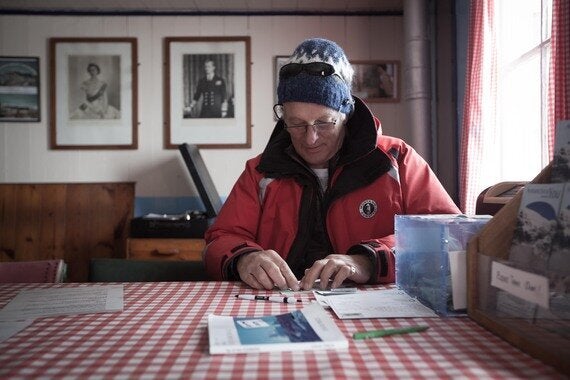
Jonathan Shackleton, cousin of the great explorer, sends a post card home from Port Lockroy the worlds most remote post office. Photo by Mark Chilvers
